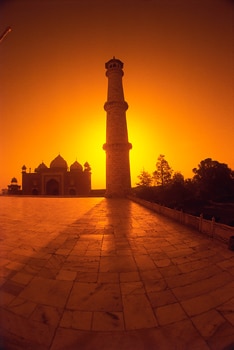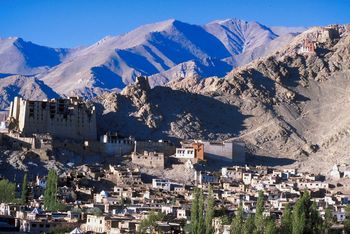
At a time of phenomenal inflation and unprecedented rise in the cost of living, it could become difficult to maintain the same standard of living, post retirement in the United States.
However, such people planning for the autumn of their lives can consider settling down in some other country, where as per current economic trends, the cost of living, 10-15 years later, is expected to be much less than the cost of living in the United States.
The country we speak of is none other than India. Has this country ever appeared on your list of retirement destinations? Let’s see why you may want to consider learning more.
Even though India is home to over 1.24 billion people, there is room for Americans and Europeans looking for a place to retire.
Let us take a look at retiring to India, possibly one of the best places to retire in Asia.
Countries in Southeast Asia such as Philippines, China, Thailand and India meet these criteria. These are countries with a low cost of living, modern infrastructures and amiable people, and laden with nature’s gifts such as beaches, mountains, lakes, islands, rivers and pleasant climate. Among these countries, India is emerging as one of the best places to retire. Its political system and democratic government makes it a natural ally of the United States and emerging good relations between the two countries provide a stable platform for immigration, from a long-term perspective.
India is a forerunner among the developing nations of the world today. It is a country with a tropical climate and has a good climate throughout the year. North America suffers from long, cold and miserable winters, whereas India has a year-round warm climate, with pleasant evenings and crisp mornings. With its rich flora and fauna, it is ideal for nature lovers as also for those who love a faster pace of life – pubs, discos, clubs, malls and multiplexes. English is spoken by a large section of the population in India, which makes it easier for Americans to communicate, relate to the environment and settle down.
Cost Of Living In India
The cost of living in India, whether for entertainment, education, housing, food, labor, medical facilities or transportation, is far less when compared to the U.S, but living in metropolitan cities like Mumbai or Delhi might prove to be a bit more costly. In these big cities, a night in a four-star hotel will cost around $100 U.S., while a three-star hotel would be around $50 U.S. Retired people with a limited source of income will be able to enjoy a much better life, in terms of their purchasing power.
However, being a foreigner, you may have to pay more than the locals. This is because generally, the locals believe that foreigners have more money. For example, the cost of a movie ticket, at a large theater in the U.S., starts at around $8, while is available for $3 U.S. in India.
Depending on the destination, ‘rickshaws’ cost around $1 U.S., while a taxi would cost around $3 to $6 U.S. The cheapest mode of transportation is the railway system, setting you back only about 30 cents per trip.
A meal in a trendy restaurant can cost anywhere from $40 to $90 U.S., whereas a meal in a local restaurant can cost $2 to $5 U.S. It bears mentioning here that local restaurants have very good food as well. Beer in pubs and clubs can be purchased for $2 to $4 U.S. Mineral water bottles are available for only about 60 cents.
Affordable Housing
The range of options in terms of accommodation available in major cities of India include posh bungalows, spacious row houses and luxury apartments. You can easily select from many choices available in each category, such as furnished or unfurnished apartments and residences, rentals or purchases, within city limits or in the suburbs. The prices for these are quite a bargain for a person accustomed to Western standards of pricing for real estate. For example, a semi-furnished apartment, 47 sq. meters in area (500 sq. feet), consisting of a bedroom, a kitchen with a bathroom and large living area on rental basis, in an Indian metro city like Delhi, would cost around $300 per month. The same accommodations would cost well in excess of $800 per month in a metro city in the U.S.
Transportation
Most major cities in India have airports and are connected to each other through cheap and efficient domestic flights. Metro cities have international airports that match global standards, with flights to almost every part of the globe. Cheap and good air-travel services are available from the government owned airways – Indian and Air India and through many private players like Jet Airways and Deccan Air. A good network of roads and rails – with multi-lane expressways and national highways facilitate easy commuting to different locations within a city and throughout the country. In the next 5 years, this is expected to improve and reach or exceed international standards given the ambitious plans of the Government of India to invest in the country’s infrastructure.
Food
India is predominantly an agricultural country, producing an abundance of fruits, vegetables, cereals and grains, throughout the year, making these available at very low prices in local markets. By virtue of its vast coastline, different varieties of seafood are also available in India throughout the year. In terms of restaurants, there is a variety of dining choices offering Indian, Continental, Chinese, Thai, Italian and Fusion cuisine. Processed foods (Indian and American brands) are easily available in malls, departmental stores, and local grocery stores. A 4-course lunch for a family of three in a five-star hotel in India would cost around $100 U.S. maximum, whereas one would have to shell out at least $500 for it in the U.S.
Medical Facilities
Cheap, state-of-the-art health care is available throughout India. For instance, a days’ stay in the hospital in the U.S. can cost well over $1500; the same facilities will cost much less, at $300, in Indian hospitals. Medical institutes and hospitals possess state-of-the-art medical equipment, often imported from Western countries, for diagnosis and treatment of all major diseases. There are famous hospitals such as the Indraprastha Medical Corporation in Delhi, which offer tertiary care services -cardiology, neurology, neurosurgery, plastic surgery and urology. It is India’s first corporate hospital and the third largest corporate hospital outside the United States. The contribution of AIIMS (All India Institute of Medical Sciences, Delhi) in the fields of medical education, research and specialized treatment is widely acknowledged. Besides western-oriented medical treatment, there are many traditional and indigenous forms of health care in India, such as Ayurveda, which is globally recognized for their holistic treatment methodologies.
Other Infrastructure And Amenities

New income opportunities in India
India is a favored destination for outsourcing, due to the availability of young educated personnel and a well-developed infrastructure. It is possible for Americans to get jobs in this booming sector that includes Call centers, especially as “trainers” imparting training in the spoken American language and American culture. Native American speakers are recruited to give special training in American English to students and business people. Other sources of income such as running small businesses off retirement benefits are also feasible.
In view of all of the above factors, India can be an immensely attractive retirement destination in Asia for United States citizens looking at leading a comfortable and self-sufficient life within their limited retirement funds. As a baby boomer you should definitely take a look at what you need to do to retire in India. See why others consider it one of the best places to retire throughout Asia.
Exchange rate (August 2012)
$1.00 US Dollar = 55.7500 Indian Rupee
1.00 USD = 55.7500 INR
Learn more about visiting, living and possibly retiremen to India:
http://www.incredibleindia.org/
http://wikitravel.org/en/India
https://www.cia.gov/library/publications/the-world-factbook/geos/in.html
